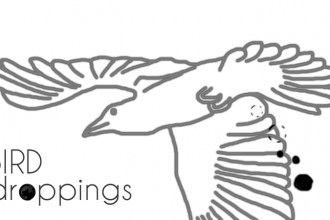A race of peeping Toms
By Tom Nixon
In his piece on Michael Powell’s much-maligned, career-imploding Peeping Tom, the late Roger Ebert stated “the movies make us into voyeurs. We sit in the dark, watching other people’s lives. It is the bargain the cinema strikes with us, although most films are too well-behaved to mention it.” Peeping Tom was a rare exception in 1960, and despite careering disastrously into Box Office oblivion along with its maker, it helped pave the way for a cinema more conscious of the scopophilic impulses underlying its appeal. The onset of the digital world has changed the way movies are created and experienced, but if anything the theme of voyeurism gains in relevance as all-seeing cameras become commonplace and smaller, easier to hide. Nowadays, horror films in particular regularly indict audiences, punishing them for indulging their most transgressive desires and refusing to let them remain mere spectators, safe in a bubble of darkness.
Alfred Hitchcock’s 1954 classic Rear Window was the first to dive headlong into these murky waters, starring James Stewart as an incapacitated photographer (both leg and camera broken) who lurks behind the blinds with a telescope, held captive by the narratives unfolding in the windows of an adjacent apartment complex. He becomes obsessively invested in one of the (perceived) stories he has witnessed and tries to exact power over events using a surrogate, receiving advice like “we’ve become a race of Peeping Toms. What people ought to do is get outside their own house and look in for a change.” Of course, Stewart is physically incapable of going anywhere, but what’s our excuse? Rear Window was the first to openly consider the ethical and psychological implications of gleefully prying into other people’s private lives.
Mark in Peeping Tom was raised by a scientist father who routinely recorded his son’s responses to fear, and these feelings of terror and emasculation — of being-looked-at — still grip him. He uses cinema as a weapon of power, re-creating his upbringing with him re-cast in the dominant role, his  victims mere objects of his camera’s gaze, unable to look back at him directly. Indeed, Mark has fitted a mirror to his camera, so the victims are forced to watch themselves die instead of seeing their killer. “Men look at women, women watch themselves being looked at“, says John Berger in Ways of Seeing, and Mulvey concurs that even female viewers must watch most films through the prism of the male perspective. Powell meanwhile forces us to inhabit the perspective of the killer, showing us the murders through the lens of Mark’s camera to analogise spectatorship with participation, highlighting our complicity by implying our voyeuristic impulses are no different from Mark’s. We are asserting power over the object of our look.
Hitchcock’s most personal film Vertigo examined his noted penchant for dreaming up female characters who serve as idealisations of male desire, be they damsels in distress or femme fatales. Always a transparent (though complex) auteur, Hitchcock’s films exhibit an array of Freudian patterns, and he is rumored to have fearfully fetishised women — Tippi Hedren infamously accused him of being controlling, possessive and misogynistic on set. Other male directors have riffed on his trademarks; notably Brian De Palma and Dario Argento, who pulled Hitchcock’s most lurid subtext to the forefront and crafted discomfiting, often grotesquely gorgeous tapestries of meta-cinematic symbolism, exploring the nature of the gaze via a veneer of seedy exploitation. Stephen Soderbergh’s indie breakthrough Sex, Lies & Videotape openly addressed the idea of cinema as a way for impotent men to get off, while Francis Ford Coppola’s The Conversation introduced audio surveillance into the conversation. Satoshi Kon’s Perfect Blue brought voyeurism into the medium of animation too, documenting a failed celebrity’s mental breakdown via the gaze of a metaphorical stalker — something David Lynch expanded on three years later in Mulholland Drive. Others to overtly explore the theme include Patrice Leconte, Michel Haneke and Francois Ozon.
Meanwhile, a great number of female filmmakers have become associated with Mulvey’s belief that this patriarchal cinema needs to be disassembled and rebuilt anew, breaking from Hollywood norms in an attempt to cultivate an active female gaze. Though they should not be pigeonholed as mere feminist filmmakers (some deny the term applies at all), directors such as Agnes Varda, Chantal Akerman, Claire Denis, Catherine Breillat and Sofia Coppola have configured fresh ways of seeing which deviate considerably from conventional male-oriented models. Akerman’s game-changing masterpiece Jeanne Dielman, 23 quai du Commerce, 1080 Bruxelles is particularly instructive in its defiantly neutral, decontextualised portrait of a woman inhabiting a domestic space, exemplifying Mulvey’s goal “to free the look of the camera into its materiality and space, and look of the audience into dialectics and passionate detachment. There is no doubt that this destroys the satisfaction, pleasure and privilege of the “invisible guestâ€, and highlights the way film has depended on voyeuristic active/passive mechanisms.”
Tom Nixon is a senior film critic for the magazine.





